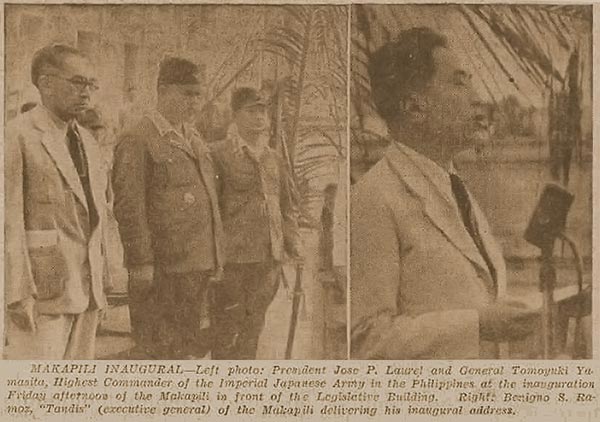|
j
a v a s c r i p t |
December 9, 1944
We waited all day in vain for Figueras, Fukushima or Okazaki. Perhaps the weather is to blame. Unusual for December, it's been raining practically every day for ten days now — the equivalent of say, a drought in the U.S. wheat belt in May, and you know what that means. Three years ago yesterday, the Japanese invaded the Philippines and the weather was magnificent throughout their campaign. The Americans are having no such luck. Although Leyte is known to have the worst weather in the Philippines (a storm a month is the norm) the climate has been unusually bad, perhaps the worst ever. After dispersing munitions from Pinaglabanan all around Maurice's district, the Japanese finally declared the area a Military Zone. I biked through there yesterday, drawing a thousand stares. The troops view non-residents with a suspicion bordering on hostility. Maurice's only option is to move to our house. Cubao may be the next such zone. War supplies camouflaged with canvas and leaves are scattered around every house there. The Tribune is six pages today: "MAKAPILI inaugurated ... President defines mission of new patriotic league." In his speech, he warned that the organization had to work for and under the government — not the Japanese by implication. 
Makapili Inaugural
"General Yamashita in first public speech in P.I. reiterates pledge to crush foe." What else could he say? "21 More U.S. Ships Blasted": a battleship or large cruiser "damaged or set ablaze" off Leyte, a convoy attacked of Suluan Island — results not yet "ascertained" — and three transports sunk in a "body-crashing raid" in the Surigao Strait. Daihon-ei's second communiqué of the day mentioned their air units attacked enemy convoys with Leyte reinforcements on board comprising a total of around 80 escort and other vessels in the Leyte Gulf, Surigao Strait and Camotes Sea from December 5 to 6. Something's definitely up. |